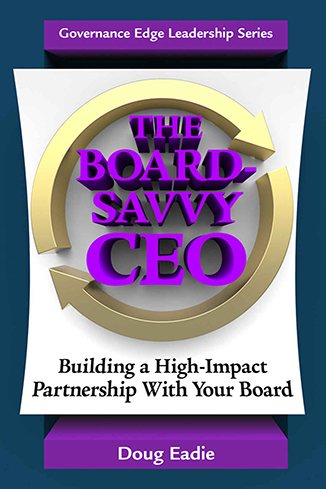Whenever you come across a nonprofit organization that is thriving and growing in these rapidly changing, challenging times, you’re virtually certain to find an extraordinary CEO at the helm wearing what I call the “Chief Innovator” hat. Sue Buchholtz, President/CEO of Evergreen Life Services – a growing, eight-state organization with a budget over $80 million that serves adults with disabilities – is a great example. Chatting with Sue recently, I was enthralled by her account of the income-earning social enterprises she and her Board have launched to diversify and strengthen Evergreen’s revenue streams.
The CEO’s playing the Chief Innovator role with gusto is critical to every nonprofit’s long-term health, As you well know, standing pat – merely incrementally tweaking what you’re already doing – is a recipe for decline at best, and eventual extinction at worst. Without question we have a tremendous stake in helping nonprofit CEOs become more innovation-savvy, and community foundations around the country have played a leading role in fostering innovative nonprofit leadership, none more aggressively than the venerable Cleveland Foundation, the country’s oldest and one of the three or four largest community foundations. So I was delighted that Bob Eckardt agreed to record a podcast for this blog, sharing what he’s learned about innovative nonprofit CEOs from his unique vantage point at the Cleveland Foundation for 34 years. Bob, who retired in 2016, joined the Cleveland Foundation as a program officer in 1982 and became its Executive Vice President in 2010.
In his podcast, Bob describes some notable innovation initiatives supported by the Cleveland Foundation, such as the Cleveland Orchestra’s expansion in Europe and Miami (see the podcast posted at this blog featuring the then-Executive Director of the Cleveland Orchestra talking about Cleveland Orchestra Miami: http://extraordinaryceo.com/cleveland-orchestra-miami-a-venerable-performing-arts-institution-leads-strategic-change/). Bob goes on to discuss key attributes of nonprofit CEOs he’s observed over the years who’ve been really effective chief innovators and describes some of the more formidable barriers to nonprofit innovation he’s encountered. I was struck by Bob’s observation – while discussing steps that can be taken to foster innovative leadership in the nonprofit sector – that funders like the Cleveland Foundation can encourage innovation among grantees by lowering the “risk of failure” – by allowing experimentation and tolerating – within reason, of course – failure.
Readers are encouraged to comment and share what they’ve learned about fostering innovation.






